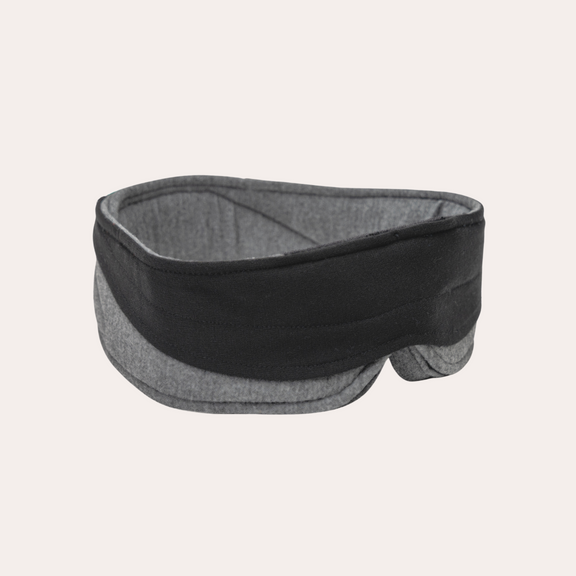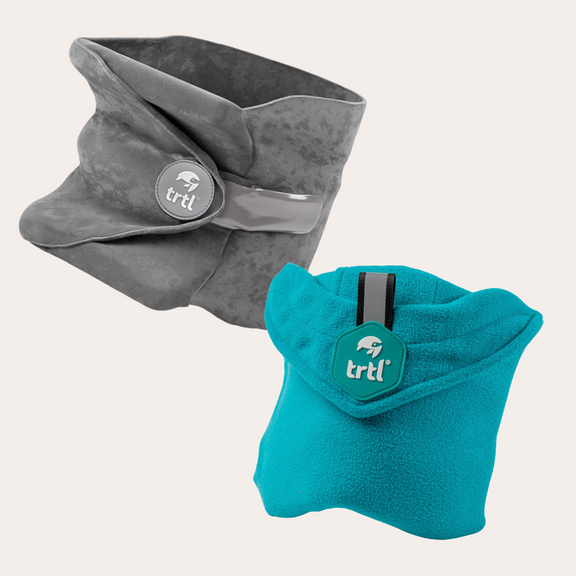Jun 27, 2024
What Are Global Health Insurance Cards (GHIC), and Do You Need One?
By
Aneta Milanowska
Planning your next European getaway? Whether you’re a seasoned traveller or taking on your first adventure abroad, there’s one essential item you shouldn’t leave without: the Global Health Insurance Card.
This handy piece of plastic can be a real lifesaver, seriously. But what is it exactly? We’ll walk you through everything there is to know about GHIC in this guide.
What are Global Health Insurance Cards?
A Global Health Insurance Card (GHIC) is your passport to proper healthcare when travelling in Europe.
It’s a free card that ensures you receive any necessary medical treatment during a temporary stay within a European country — think of it as a safety net should anything happen to you when you’re abroad.
The GHIC is a relatively new card introduced in 2021, replacing the old European Health Insurance Card (EHIC) for UK residents following Brexit. Despite the change in name, the GHIC offers similar free benefits of cover to the EHIC, such as emergency medical treatment and visits to hospital A&E departments.
Who needs a GHIC?
If you’re a UK resident with plans to travel to Europe, getting a GHIC should be high on your pre-trip checklist. Whether you’re jetting off for a leisurely holiday, crossing borders for business, or studying abroad, a GHIC is a must-have.
GHICs aren’t just for those rare, unforeseen medical emergencies but also for routine care. Imagine you have a pre-existing medical condition and need regular medication or treatment. With a GHIC, you can access necessary healthcare without worrying about hefty bills.
Even if you don’t travel as much as you’d like to, the reassurance that comes with having a GHIC in your wallet or purse really can make all the difference!
What does a GHIC cover?
A GHIC is designed to cover necessary state-provided medical treatment that becomes essential during your stay. The NHS describes this as “healthcare that cannot reasonably wait until you come back to the UK”, and it includes things like:
- Routine maternity care as long as you’re not going abroad to give birth
- Treatment or routine care for a long-term or pre-existing condition
- Emergency treatment and visits to A&E
In some cases, you’ll need to pre-arrange some treatments with the relevant healthcare provider in the country you’re visiting, such as if you need chemotherapy or kidney dialysis.
Unfortunately, it’s not guaranteed that local healthcare facilities will always have the capacity to provide this care, so it’s best to arrange in advance.
What doesn't a GHIC cover?
While the GHIC does offer a lot of cover, it’s also important to understand that it comes with its limitations.
One key aspect of the GHIC is that it doesn’t cover private healthcare, so if you choose or need to be treated in a private clinic or hospital, you will be responsible for those costs.
The GHIC also won’t cover costs associated with adventurous activities. For example, if you’re skiing in the Alps and need mountain rescue, those expenses won’t be covered — you’d have to get specialist Ski Insurance. Similarly, if you need to be flown back to the UK for medical reasons, those costs would have to come out of your own pocket or be covered by your travel insurance.
Where can you use a GHIC?
The GHIC is valid in European Union countries, which include:
- Austria
- Belgium
- Bulgaria
- Croatia
- Republic of Cyprus
- Denmark
- Estonia
- Finland
- France
- Germany
- Greece
- Hungary
- Ireland
- Italy
- Latvia
- Lithuania
- Luxembourg
- Malta
- Netherlands
- Poland
- Portugal
- Romania
- Slovakia
- Slovenia
- Spain
- Sweden
You can also use the GHIC when you’re visiting:
- Montenegro
- Australia
- Jersey, Guernsey and the Isle of Man
- St Helena, Tristan and Ascension
The UK government is also negotiating with other countries to expand the use of the GHIC.
How do you use a GHIC?
Using your Global Health Insurance Card should be a straightforward and stress-free process. This is how a typical interaction would go:
- Seek out public healthcare providers — If you need medical assistance, make sure that it’s at a public hospital or clinic. Private facilities won’t accept GHIC, and you’ll be charged for any treatment received there.
- Present your GHIC — When you arrive, show your GHIC along with your identification. It’s a good idea to carry your passport or driving licence so you’ll have easy access should you need it.
- Understand the costs — Depending on the country, you might still need to pay for some services or medication upfront, but at a reduced rate. In Montenegro, for example, you can get free emergency treatment, but you’ll have to pay for any prescribed medicines. Keep all receipts and documentation, as you might be able to potentially claim these expenses back once you return.
How much does the GHIC cost?
Great news for travellers — the GHIC is completely free! There’s no charge to apply for or receive your card, making it accessible and essential for all UK residents planning to travel to Europe.
How do you apply for a GHIC?
Applying for a Global Health Insurance card is simple: You can apply online with just a few clicks.
- Visit the official NHS website — The only place you can apply for a GHIC is on the NHS website. Any other website advertising GHICs (especially for a fee) is a scam.
- Fill out the application form — Next, you’ll need to provide some personal details, including your name, address, date of birth and National Insurance number. Make sure all your information is correct to avoid delays.
- Submit your form — Once you’ve filled in all the necessary information, submit your application. The NHS will process your request, and you should receive your GHIC by post within a few weeks.
It's really as easy as that.
Are GHICs the same as EHICs?
The GHIC is essentially the post-Brexit replacement for the European Health Insurance Card for the UK. While both cards offer similar benefits, they differ slightly.
Before Brexit, the EHIC was also valid in Norway, Switzerland, Liechtenstein and Iceland. Since the introduction of the GHIC — and if you still have a valid EHIC — you won’t be able to receive free or reduced-cost treatment in these countries.
Make sure to check the back of your EHIC for an expiry date, as it may still be valid and can be used until it runs out. After that, you’ll have to apply for a GHIC.
While the name and some of the specifics might have changed, the core purpose remains the same: to provide travellers with necessary healthcare during their trips.
How long does a GHIC last?
A Global Health Insurance Card is valid for five years from the date of issue and is completely free. This generous validity period means you won’t have to worry about renewing your card every time you’re set to travel.
If your GHIC is nearing its expiration date, you’ll have to replace it with a new one before you travel, as it won’t be valid.
How long does it take to get a GHIC?
The processing time for a GHIC can vary, but you should generally expect to receive your card within 10 - 15 working days after applying.
Make sure that you apply well before your travel dates. While 10 - 15 working days is the usual timeframe, during peak periods — such as the summer holidays — processing times might be a little longer due to high demand. Applying early helps avoid any last-minute stress.
Is a GHIC a replacement for travel insurance?
No, a GHIC is not a replacement for travel insurance, and you’ll need this in addition. While the GHIC is incredibly useful, it doesn’t cover the full spectrum of situations that travel insurance does. It’s best to think of the GHIC as a complementary tool rather than a comprehensive solution.
Travel insurance offers a much broader range of cover, such as protection against trip cancellations, lost or damaged luggage, delays and much more that GHIC doesn’t cover.
Another critical aspect of travel insurance cover is repatriation. If you’re seriously injured and fall ill and need to be flown back to the UK, the costs can be extortionate. Travel insurance ensures that these costs are covered, something which the GHIC doesn’t.
Does the GHIC cover existing medical conditions?
Yes, one of the best things about the GHIC is that it does cover pre-existing medical conditions.
If you have a chronic illness or require regular medication, the GHIC ensures that you can access this without having to pay ridiculous costs. This means if you need a doctor’s visit, prescription refills, or even hospital treatment for your condition while abroad, you can receive these services under the same conditions as a resident in the country you’re visiting.
It’s always a good idea to double-check the destination you’re heading to and make sure they have the medication and services you need.
What happens if you don't have your GHIC with you?
Don’t panic if you find yourself needing treatment but don’t have your GHIC with you.
You can apply for a Provisional Replacement Certificate (PRC) online and you’ll need your email address, National Insurance number and OHS reference number (if you have one).
You can also call to apply for free from outside the UK on +44 191 218 1999 Monday to Friday 8am to 6pm.
Get set for your travels with Trtl Travel
The Global Health Insurance Card is an indispensable tool for any UK resident travelling to Europe. However, it’s important to remember that the GHIC isn’t a replacement for travel insurance; the two go hand in hand.
If you’re looking for comfort on your journey to Europe, our Trtl Travel Pillow is essential. With complete head support and breathable, super-soft fabric, it's a must-have in your carry-on.
Or, if you’re looking for more information on all things travel, head over to our blog page.




















